|
COMMON NAME: Usnea Other Names: usnea lichen, old man's beard BOTANICAL NAME: Usnea barbata, Usnea longissima, Usnea hirta. Usnea plicata, Usnea fillipendula, (there are 600 known species but these are the most commonly studied and utilized species for medicine). Plant Family: Usneaceae CONSTITUENTS: Usnic acid, essential fatty acids, mucilage, sterols, and many more not being listed here at this time. PARTS USED: dried thallus, also called lichen strands. PREPARATIONS: Tincture, liniment, compress/fomentation, poultice, cough syrups, cold lozenges, decoctions, wound washes, wound packing & powder, douches, sitz baths. Taken internally and applied externally. Tincture can be applied as liniment to skin full strength or added to mister bottles with water and essential oils for skin fungus and infections. To bathe sinuses add 2-3 drops of tincture to netty pot washes. MEDICINAL ACTIONS: Analgesic, Antimicrobial, (Antifungal, Antibacterial, Antiviral, Antiparasitic, Antiprotozoan), Antiseptic, Antiproliferative (cancer), Immunostimmulant, Anti-inflammatory, Antineoplastic (cancer), Antioxidant PRECAUTIONS: Not for use during pregnancy is often reported by many. No other known precautions exist. I will share that with flu and pregnant, I did enlist the support of Usnea with great results. My rule with plants where we just don't know the effects during pregnancy and yet there seems to be good reason for it to be fine is to take 1/4 the dose to start. The pregnant body is very sensitive and requires very small doses and can work with this well because of the heightened state we are in when pregnant. You get to decide for you and your baby. This is not based in any research nor is it a suggestion. I only share what I've experienced. THE MEDICINE: Walking through the forest is where one will encounter Usnea. Did you know know that the inconspicuous gray-green fuzzy plant covering many of the trees is one of the gentlest yet strongest immune tonics and antimicrobials in the herb world? Usnea is a lichen; a combination of an algae and a fungi growing together symbiotically on the surface of the tree. Also known as Old Man's beard, it grows in little hair-like tufts, with the green algae covering the white string like fungi. The best way to identify Usnea is to pull a string apart and look for this white thread. No white thread means it's not Usnea. I do recommend showing a sample to a knowledgeable person to confirm you've got the right plant. Some people say that the Usnea lichen likes to grow in old growth forests. It must be true but I've seen it on younger trees too. Stephen Buhner has suggested that Usnea serves as the lungs of the forests they grow within, and in some way supports the overall health of the ecosystem. I believe this to be true. It carries the energy of a wise elder, maybe a grandfather for me. This plant grows profusely in wet climates, like the Pacific Northwest, where tufts can be up to a foot long. The species that grow here in the northeast tend to be smaller, which can make gathering it a tedious task. I find gathering after a big wind storm good because the wind will blow down the Usnea from the higher branches. I grew up in orchards and the old abandoned apple trees had lots of Usnea growing on them. Usnea is an immune system tonic that can be used in acute situations as well as for long term immune enhancement and general prevention. It has no side effects or contraindications, and is safe for children and animals. It can be taken along with or instead of Echinacea. Usnea is more specific for strep and staph infections than Echinacea, and the antibiotic properties are most specific to the respiratory and urinary systems. We take to help heal respiratory and sinus infections, bronchitis, pneumonia, strep throat, colds, flus, as well as urinary tract, kidney, and bladder infections. Usnea is also beneficial for women with yeast infections, trichonomosas, bacterial vaginosis, and chlamydia. It can be helpful as part of the plant-based remedies taken for people with chronic fatigue, HIV, herpes, and other chronic conditions related to depressed immunity, especially when taken in a pulsed fashion for acute flare-ups within the chronic condition expression. Usnea can also be used externally for outbreaks of staph, cellulitis, or infected wounds. I generally use the powdered herb, strong decoctions applied with a cloth, or the diluted tincture for open skin and straight tincture for closed skin. The moistened herb also makes an excellent bandage to be used directly on the wound or affected area. Should you have the great fortune of being near this one fresh when an injury happens, packing the wound with fresh plants after bleeding has been addressed is perfect for keeping the wound tended until you can get to a better situation for cleaning the wound. This tough yet delicate looking little plant (not plant, lichen) doesn't make much of a tea due to having so little water soluble properties, so I recommend using it as a tincture. The heat required to make many medicines will however take the place of the alcohol so you may stay water-based in your preparation if alcohol is a concern. Increase your dose by 1/4-1/2. I've made a throat spray by diluting the tincture with water, Essential Oil of Eucalyptus, and Honey. It was a spontaneous creation that works great and seems to have the ability to kill microbes on contact. I also, as stated above, place 2 drops of tincture into a full netty pot for sinus irrigation. I do this when I know I've been around the flu or have started active symptoms. I also take it internally 30 drops 3-5x/day and add to cough syrups too. I've found it to be quite effective with serious cases of bronchitis and pneumonia. Dosing will be increases from 2-3x/day to every 4 hours 30-60 drops to 1/2 teaspoon of tincture with convalescence and bone or medicinal mushroom broth based soups for a few days. Let’s be wise my friends. If someone can no longer walk well or maintain their oxygen levels so they look pale and grey (awful), seek medical attention. These are advanced distress signs of a very weak system so unless you are comfortable with what this looks like and what to do, seek help and learn. Watch closely so you can learn well from the experience. And yes, one can treat with plant medicines and modern medicines together. Seek guidance on how if you are inexperienced. Herbalists were ordered with threats to be silent by the FDA during the Anthrax scare. This was the first plant turned to for protection from inhaled life threatening situations; second to quarantine. Hypothetically speaking, dilute the tincture in a spray bottle with Eucalyptus essential oil and mist in front of the face for inhaling. I add 60 drops of Usnea tincture to 2oz. of water with 20 drops of the Eucalyptus essential oil. It could be called, hypothetically speaking, an "air purifying spray". Also use the netty pot with 2-3 drops of tincture only (more than this burns the sinuses). For Weight Loss? NO. It was reported to help with this by isolating Usnic acid and concentrating it and people were hurt most likely due to toxicity from receiving the plant in compound isolated form. Work with the full spectrum of whole plant preparations for safety reasons. The FDA was considering banning the plant due to this but it has fallen away a bit thankfully. Do educate that this is not a way to work with Usnea. TINCTURE MAKING CONSIDERATIONSUsnea has water soluble and non-water soluble compounds and so there are suggestions by herbalists to provide a two part preparation for making the tincture in order to extract the full spectrum of the medicine offered. For alcohol sensitive people, a syrup or glycerite made with heat will provide a good option but I would suggest larger dosing (double the dose). The polysaccharides are found in the fungi portion of Usnea (white inner core) and are part of the water soluble medicine. The alkaloids and acids found in the outer green algae part of Usnea are extractable in 90-95% alcohol, this being the non-water soluble parts. There are other compounds identified and unidentified but by making your tincture in this two part process you will be getting the full spectrum of what Usnea has to offer for healing. Making Usnea barbata Tincture – A Two Part Extraction Process Usnea Tincture at 1:5 dried 45% alcohol – Adult Suggested Dose: 1-2 dropperfuls 1-4x/day depending on the health condition and presenting symptoms. PART 1: You’ll need 3-4 oz dried usnea, Everclear 90-95% Alcohol + 1 quart jar
CONGRATS! You now have a dual-extracted, highest potency Usnea tincture made by you! I also do this cook process for other healing herbs such as Astragalus root, all medicinal mushrooms, Ginger root, and a few other tinctures to honor their water soluble compounds as well as their converted-by-heat compounds they have. Cannabis is proving to fit into this category of healing plants/lichens/fungi as well with it's need for decarboxylation to potentize certain compounds. Some herbalists now do this two-part extraction with all dried roots and barks to be tinctured. I’m grateful to Stephen Buhner, Ryan Drum, and Christopher Hobbs for pioneering the simple techniques of a two part process to make a more potent tincture.
Usnea is also an indicator plant to the health of an area as far as pollutants are concerned. Christopher Hobbs has shared many a time on how Usnea will recede from highly contaminated places because it absorbs such toxins easily due to the nature of it's growth pattern. We would not want to make medicine from this and this wise medicine lichen will not allow it either. This is surely another way the wise protection held in the medicine reaches through. And so to find it is a great reason for ceremony and rejoicing for me. Processing Usnea for External Use Usnea has very tough cell walls! Therefore, you need to break up its surface area— by grinding, mashing, or chopping to make its medicine more bioavailable. For an herbal powder which can be used to clean and treat wounds, simply air dry the Usnea (it dried so fast and often in a few days just sitting around in basket), and then grind it into a fine consistency using a mortar and pestle or an electric grinder. This powder can be sprinkled directly into wounds, or you can simmer for 30 minutes, and add other antimicrobial plants (love rosemary, plantain, yarrow, calendula to name a few), steep, strain, and wash wounds or apply compresses with the warm to cool tea. Harvesting Usnea Usnea takes a long time to grow. Therefore, I only harvest it from dead fallen branches rather than from living trees. Make sure you’re harvesting the right lichen! One distinguishing feature of Usnea is the presence of a thin, thread-like, white central “cord” that is revealed when you pull apart the outer sheath of the thicker main strands of the lichen. These cords have an elastic consistency to them, so when you pull them apart, they should be rather springy/snappy. When harvesting Usnea, look for the vibrant, brighter colored specimens as opposed to those that have been hanging out on the ground for a long time and look semi-decayed and brownish. I like to harvest Usnea using a knife or clippers, that way I can easily separate the lichen from the branches that they’re growing on and leave any bark or other debris behind. This also leaves the “roots” of usnea embedded in the tree where it can continue with its own life process. Make sure you harvest away from roadsides or developed areas as Usnea can absorb toxins and heavy metals from the environment. When in Ecuador high in the Andes Mountains hiking in the forest, tufts of Usnea floated down into my hands one morning. It was one of those moments that stops you for it's undeniable how plants can come to us in seen and unseen ways, calling our attention deep in our heart and soul to connect. To make and honor that bond deeper than before. Thank you so much for wandering through here with me. Much Love, Jen
1 Comment
Making good food as our medicine is often a big hit when it comes out of our kitchen. Years of playing and experimenting in the kitchen make it all happen. We took up our best knives and chopped, stirred, consulted knowledge, experience, and the intuitive forces present and came up with this simple yet potent, satisfying soup for deep winter support. after many requests, we thought we'd give it a proper write-up. Enjoy from our kitchen to yours. Shiitake Mushroom Bisque with Thyme & Nettles |
There's many reasons why this plant has circled the globe with us! Some plants will always walk close to people and this is definitely one of them.
Let's talk Chocolate
A quick peak at some of the benefits include:
- digestive and liver support
- improving mood and sleep (which improves all aspects of life!)
- tonic for the heart and circulatory system
- reduces cholesterol
- balances blood sugar and energy levels
- aphrodisiac libido enhancer - increases interest ;)
- hormone balancer for easing endocrine fluctuations in women AND men (who won't talk of such things most of the time!).
That's just a few. More to share in another article later. Promise!
The darker the better is the caveat. Quality matters.
Cultivate a taste for the more bitter, quality made chocolate and you will find that you only need a small piece to satisfy that urge. Poor quality or milk chocolate makes us crave more because the body is looking for the medicine and nutrients which are basically diluted (or adulterated) in these forms. Hence, you have to eat more and more, which increases sugar and caloric intake. This is so not necessary so stick to fair trade, dark, and organic too. Yes, the bars are more on the cost side but actually less expensive on the health maintenance side of the equation. Supporting the families that work hard in the tropics with these indigenous plants deserve to get our global honoring too through supportive purchases. That makes for good medicine all around.
Cacao & Ishpingo Tree Replanting and Prayer Dedication Project
I'm heading to Ecuador in February 2017 to see my teacher Rocio Alarcon who is from the rain forest. She has planned a reforestation project in an area devastated by clear cutting and oil drilling to satisfy our oil hungry country that is destroying many things, one of which is the WATER. This was no small feet either as the government first wanted to plant grass and foreign trees. Rocio presented an impeccably sound ecological management plan for the same area that would serve the area better and it was accepted! We will be reintroducing two native tree species and one is Ecuadorian Cacao (...squealing with toes wiggling... excited is an understatement!). Why is this as important as getting away from oil? The rain forests are needed to maintain our global ecosystem. With 20% destroyed and 20% not functioning well, we have a dilemma. Replanting must happen along with seeking alternative lifestyles that are more energy efficient. It starts one tree at a time.
Should you wish to send prayers and dedicate a tree(s) to your family or any person, place, or cause...
I'm carrying my small Ecuadorian handmade bag from the women of this area with these small, private, sacred, paper, prayer bundles tried with string or twine that you prepare and contain your intimate prayers between you and the Earth Mother. They will be ceremonially dedicated to a tree(s) in honor of who you decide needs such dedicated prayers. The trees are $11 and grown by native women in Ecuador. If your heart calls for this, email me for my address and details (see below). I'm truly honored and so excited to be a part of this. Your name or place or cause will hang on a small tag in the middle of the rain forest in honor of your prayers that will either be buried with your tree(s) or burned in ceremony to release the prayers. Join me in making small actions ripple out for real change to grow.
OK Jen the recipe... Did I mention my favorite recipe for hot cocoa?
INGREDIENTS:
- 1 1/4 cup cocoa powder -fair trade organic - not 'dutch processed'
- 1-2 cup quality cane sugar*
- 1 1/2 teaspoons sea salt
- 1 1/2 tablespoons arrow root powder (or quality cornstarch)
- 10 ounces dark chocolate chips
DIRECTIONS:
-* You decide how sweet but even with 2 cups it is not very sweet. Start with one cup and taste test before adding more. I like it more bitter. Maple granules are great too.
-Place all ingredients in the food processor and whirl until the chips are all finely ground.
-Find great bottles or use mason jars and make a home-made label (with all your known and easy to pronounce ingredients!)
- Add 1-2 tablespoons whisked into a mug-sized amount of warming milk of your choice until steaming hot. Pour and enjoy!
Optional Additions:
Cinnamon, Cayenne, and Cardamom are traditional additions but other spices can be added to your liking. I'm thinking about dripping some Sweet Orange Extract in my next batch! I also add to Lemon Verbena tea as I was taught by my teacher to drink at 6am on an empty stomach to get all the benefits of the cocoa.
Yes, a more detailed article about Cacao and cultivating intimacy with a tree even though it may not grow near us is coming. Consider this as part of your initiation process ;) The beauty about the plant world is that not all medicine has to be bad tasting, harsh, or hurt in some way. So grateful for this.
ENJOY!!
Much Love, Jen
EMS has on-going Herbal Classes, on-line and in-person, to support the expanding desire among us to know the plants intimately as part of one's healthcare system for ourselves and loved ones. Deepening our relationship with the plants is where it all starts. 'Begin anyway' is our mantra. Have a look around and email if you feel called or have questions.
Tree Donations and Prayer Bundles for Ecuador? Email me directly for my address and details at: [email protected]
Thank you for supporting small businesses and grassroot projects world wide. Change does happen from our seemingly small efforts. It just may be the only way. xo-Jen
The Medicine and Mystery of Indian Pipe
Maybe you've seen this unique, chlorophyll-devoid plant in your wanderings as it pokes up through the brown leaf litter in the forest and along its edges? Have you wondered about it and been fascinated by it like I have? This is Indian Pipe, also called Ghost Plant or Spirit Plant, (Monotropa uniflora) and it’s a traditional shamanic plant that offers many spiritual and medicinal properties.
Indian Pipe, by lacking chlorophyll, cannot make its own food and so must make agreements with others in order to survive. It absorbs its nutrients from a mycorrhizal fungi group living in the root zone of the forest. Mycorrhizal fungi are beneficial (symbiotic) organisms that vastly expand the absorptive surface area of a tree’s root system and aid in the uptake of specific nutrients. In exchange for scavenging for nutrients the tree reciprocates by providing carbohydrates for the fungus, in the form of fallen leaves.
Germinating seedlings of Indian Pipe chemically mimic the tree’s root system causing the mycorrhizal fungi to attach to the roots of the newly forming Indian Pipe plant. Some call it a kind of ‘biological identity theft’. This doesn't resonate for me and I think more understanding will unfold as one spends time with Indian Pipe who is connected to the complex network of trees. The tree sends its sugars produced in photosynthesis to the fungus mycelium which in turn passes some along to the Indian pipe. This arrangement is technically called epiparasitism, a ‘parasite feeding on a parasite’. This word parasite conjures some negative thinking but it belongs within the realm of symbiotic relationships and I believe our scientists have not yet uncovered how Indian Pipe actually gives back within the cycle of things within the forest.
Indian pipe is only able to feed on one group of mycorrhizal fungi, the often colorfully-capped ones known as Russula. These beneficial fungi are able to attach to a wide variety of tree species including Oaks and Beech. Cool, moist and shaded conditions favoring the accumulation of thick deposits of leaf litter favor the development of the mycorrhizal fungus and mark the kind of location where Indian Pipe is likely to grow. Indian Pipe is often a quietly unassuming part of the workings of the complex forest ecosystem.
Since it can only feed on Russula fungi, Indian Pipe is an extremely rare plant and is never intolerant of cultivation or being transplanted. There are many lessons to learn from plants that require impeccable timing, a trust beyond the logic of a scientist, and bringing us to them while they move about mysteriously with growing requirements so detailed that we can understand them but cannot manipulate their existence. This plant should only be harvested sparingly, only when large colonies are found, and with profound respect for the spirit of the plant.
It would be auspicious and appropriate to know why we want some and to state it loudly. It is heard and the truth is known too. Then we can follow the response of Indian Pipe that is we intuit versus assuming what you want to hear or think we need or are entitled to.
Medicinal Parts: flowering tops, flowers
Best Preparations: Fresh Infusion, Fresh Tincture 50%, Flower Essence.
Important Note: dried is only useful for the compost pile so please do not bother with this.
Honoring Multi-Level Medicine...
On the more physical level, Indian Pipe was employed instead of quinine to treat West Nile Virus and Malaria for some time. It’s an extremely potent nervine often used to treat seizure disorders, convulsions, insomnia, mental health disorders, PTSD, and chronic muscle spasms. It was also combined with other plants to bathe inflamed eyes. I suggest the easier grown and effective Chamomile (Matricaria chamomilla), Chickweed (Stellaria media), or Calendula (C. officinalis) instead, though I have to notice that it speaks loudly to 'clearing vision'. This may be part of Indian Pipe's alignment medicine.
Many stories are told that it’s an excellent pain reliever as one of its main constituents is salicylic acid, which is aspirin. So if you’re thinking it will be stronger than opioids to just kill pain, I would say this is not the plant for you. It may have a place in pain management but Willow Bark (Salix alba) and Meadowsweet (Filipendula ulmaria) provide the same physical medicine and are easier to find and grow, if we are talking physical medicine only. It also may produce compounds we do not understand yet which is why the stories speak to addressing conditions that aspirin does not touch. If you’re interested in digging deeper into why pain has become the language of your existence then yes, this is the plant for you.
Please turn to Indian Pipe Flower Essence for this deeper unraveling.
The True Gift of Indian Pipe
I sometimes combine this essence with Lavender (Lavanula offcinalis) or Mugwort (Artemisia vulgaris) for deep dream work. It illuminates hope to those who seek their truth and are willing to do the work and face their fear and pain. Indian Pipe flower essence assists us in standing with the truth of our pain and to bear witness to it, instead of confining it to an expression within the confines of our physical nervous system or energetic emotional body. Think 'alignment', 'hollow bone'. To journey into the pain and ask the hard questions is the medicine of Indian Pipe. It is a still and quiet plant, and only those who are truly ready to bear that silence, which sits beyond fear and pain, will gain the full benefit of what this plant has to offer around personal truth. It brings brightness and is a beacon of light within ‘the dark night of the soul’ we all must travel at some point in life, guiding one back to a place of understanding, balance, and peace. Indian Pipe will stand strong next to one who faces their fears in the name of moving forward.
It moves from year to year and place to place...
Key Terms for Indian Pipe Medicine: soul alignment, course correcting, staying on path, unearthing core issues that bind, entering the silence beyond fear or pain, clearing vision, honoring the hard questions we must bear, becoming the hollow bone for spirit.
Honoring the Medicine of Indian Pipe – Spirit Plant - xo – Jen
ElderMoon School of Herbs
Elder – Sambucus nigra, Sambucus canadensis
I've included here a Plant Profile of Elder as is given to my students at ElderMoon School. A profile is just that, and informational writing of my experience of Elder, with practical information I have learned from others and from the plant directly.
Parts Used Medicinally:
Leaves, flowers, berries, bark and some Herbalists have taken in the root but be careful with taking in only small amounts for severely acute illnesses only. The flowers are a prized edible for salads and fritter making, in ancient facial care formulas such as Queen of Hungary's Water, and for making liqueurs and are the base of St. Germain's liqueur made in France. This proves to be a magical, delicate and delicious addition to drinks of all kinds.
Contains: Scientists have isolated proteins that appear to protect our healthy cells from the invading actions of viruses by literally making a protein coating they cannot penetrate. Ongoing clinical trials continue for HIV, herpes and flu.
Medicinal Actions: Antimicrobial, febrifuge, antiviral, diaphoretic, expectorant, anti-inflammatory
Common Names: Black Elder, Common Elder, Pipe Tree, Bore Tree, Bour Tree
Habitat and Description:
Elder grows throughout North America and Europe and are quite abundant. Elders produce large clusters of small white or cream colored, delicately aromatic flowers in the late spring, and are followed by clusters of small red, dark purple or black berries. The shrubs can live over a hundred years. Gather the darker berries of black and dark purple; avoid red berry varieties which are more toxic. I stay with the S. canadensis which is more shrub-like and the European species of S. nigra which grows more as small tree. There are many hybridized varieties too but I seek the older known species for medicine making.
Elderberries grow best in moist, fertile, well-drained soil but will tolerate a wide range of soil conditions. Elderberry plants are generally free of pests, which makes them great for landscape plantings. However, the deer can and do devour them if Elder is in their usual grazing path here in Woodstock, NY. Harvest elderberries in late August through early September before the birds get them all. It is an ancient practice to consider negotiating with birds if you want berries and know howto enter such negotiations as they often strip the bushes while the berries are still green.
Elder took root in the center of one of my vegetable gardens years ago. I deeply honor this plant for healing. I love how the plants work with the insects, animals and particularly the birds in order to be mobile across the land. It makes gardening as an herbalist full of welcomed surprises. It's a different way of gardening and much easier! So Elder stayed there and we adjusted who and what grew around this beauty. She has edible flowers too that make their way into salads, garnishes, drinks of the muddled sort, and fritters!
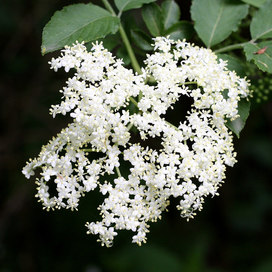
Looking into past harvesting practices will easily uncover many a story about how Elder grows at energetic portals or doorways deep into the Earth and if she chooses to grow near you then she has agreed to be a guardian of your home and tribe. The roots are said to lead to other worlds and are connected to the Mother of us all - the Dark Mother and Goddess of Earth Magic - that reigns stronger during the Winter Solstice time. Her essence resides in the Elder and must be consulted with before harvest or removal of any part or whole plant. Great warnings of mishaps that can ensue if one does not ask abound. It is common practice to ask within the heart and be sure to self-reflect on greed or ulterior motives for this will be seen.
Spiritual and Energetic Medicine:
In pre-Christian times the ancient vegetation Goddess presided over the cycle of life - birth, life, death and regeneration. This rhythm is reflected in the waxing and waning of the moon, the cycles of the season and naturally was also thought to govern the lives of women and men. Thus, in one of her aspects she was revered as a Goddess of the Underworld, who guarded over the souls of the dead. Green twigs of Elder were often placed into coffins or buried in graves to offer protection for the deceased on their journey to the other world. Elders were also planted on graves and in some places it was a custom for the driver of the hearse to carry a whip made of Elder wood to keep focused and safe while escorting the dead to their final resting place. Crowns were woven and worn of tender Elder branches and leaves at Samhain, near Halloween, to facilitate communion with our dead beloved ancestors who do return to visit and assist.
Elder Flower Essence helps one appreciate self and all beings by enhancing the ability to see the value in how things truly are. Elder removes the walls and ceilings of comfort and dissolves judgement and fixed ideas. Elder brings us deep within to our emotional blockages and helps us dissolve these as well. Past life recall as well as accessing blurred events of one's current life is enhanced when necessary for aiding understanding of where one is now and how healing can flow.
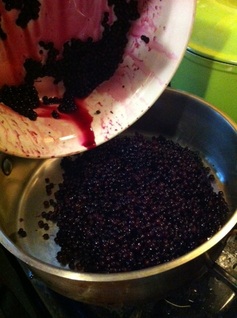
Elder flowers and berries are used in herbal medicine to treat colds and flu, coughs, constipation, hay fever, mouth ulcers, sore throats, tonsillitis, rheumatism, herpes, wounds, bruises, and muscle sprains. The berries are also made into syrups, jams, teas, vinegars, honeys, cordials, and wines. They are cherished by children and easy tasting as a syrup, though the natural dominant flavor is sour.
Taking elderberries into the body is widely accepted as a potent antiviral, though please do not take this in place of practicing the best healing art of convalescence. These expectations are too tall for nearly all medicine forms.
Elder flowers make an excellent cough remedy. The flowers are considered a powerful expectorant and make a useful addition to cough syrups as simple infusion with lemon and honey. They reduce phlegm, stimulate the circulatory system, promote sweating, increase urinary flow, and when applied topically, are anti-inflammatory.
Elder flowers are known to soften the skin and are often added to lotions and creams. They help heal chapped skin and are a good addition to hard working hand lotions. Elder flower water can be infused in the sun and moon to drink and bathe the body to rejuvenate the physical and spiritual self. Elder flowers are infused in olive oil or other oils and added to salves for the treatment of bruises, sprains, strains and open cuts and scrapes.
The infused flower oil makes an excellent lubricant for sexual play too; particularly during menopausal times when thinning and drying of the vaginal walls is a complaint. The first medicine for this is cultivating regular sexual pleasure and expression. Yes, this flower infused oil can enjoyed at any age too and sometimes I mix in a bit of coconut oil. I have also mixed it with Comfrey leaf for enhanced moistening and softening properties and Chamomile when sexual expression is hindered by old stories of sexual abuse. These are also infused oils and one may add some essential oils to enhance and direct the aroma and therapeutic actions.
Elder flowers and berries are a good remedy for feverish colds and flu. Gypsy Tea is an old recipe resurrected by Rosemary Gladstar of equal parts of Elder Flower, Catnip, Peppermint and Yarrow for wise fever management which is also so easy to drink for it's delicious! Mixing Elder flowers with Nettles and Red Clover and taken in as a daily tonic by infusion, strengthens the upper respiratory tract and can help ease hay fever and allergies if taken early in the year before pollen season arrives; do add local raw wildflower honey to this for is contains local pollen to help with desensitization of your immune system to your local plants.
Elderberries help rid the body of toxins by promoting sweating (diaphoretic) and urination (diuretic). It can be taken as a laxative in cases of stubborn constipation. Elderberry syrup is popular to take in the treatment of coughs and deep lung congestion. For added strength, I sometimes combine with Thyme into a delicious syrup. Percussion (drumming) over the lungs on the front and back of the body is an added help and wise ancient practice still utilized in critical care settings of the hospitals today. Elderberries are a rich source of vitamin A and C. The berries can be dried for use as a nutritious food. In days before oranges and other citrus fruits were commonly available, elderberries were made into wines and syrups and taken to prevent scurvy.
Elderberries are also juiced and applied as a hair dye to impart funky blues and purples to lighter colored hair.
Elder bark was sometimes given to promote vomiting historically. The bark is also a liver stimulant, hence the emetic properties, but in today’s herbal medicine practice it is rarely used for this purpose and has been replaced with ER visits for giving charcoal and nasogastric tubes to empty the stomach. Poison control centers are fantastic resources for how to get the poison out. Vomiting can sometimes do more harm. No matter how you look at it this is an unpleasant situation and the road one must endure should anyone be found in such a situation.
Elder leaves can be poulticed for wounds in emergency situations but should not be taken internally as infusions. Applying as a poultice is localized to a small area and poses no harm. When crushed and rubbed to the skin, they will keep insects away for up to an hour; many aromatics will too and I love Rosemary and Lavender for this too. Carole Guyette, in her book Sacred Plant Initiations, has an entire chapter dedicated to Elder plant dieting for deeper healing with Elder. She describes making a sacred anointing oil she calls ‘Green Oil’. It’s made by soaking fresh green chopped leaves in warm olive oil until is changes to a beautiful green color, about 4-6 hours. Strain, re-bottle and place on your altar for when needed in sacred ceremony and moments.
Elder wood is hard and close-grained. It is used for making skewers, toys, and quickly carved flutes once the pith is removed in younger shoots.
Remember too - the more flowers you harvest, the less berries you will get later in the summer so think of this as you plan your medicine harvesting. Elder returns every year so you need only enough to get to next year's harvest.
May you enjoy this Summer Solstice and seek the company of Elder in bloom or in whatever stage it is at. Even if only to seek the company of and sit near one of these ancient medicine keepers to enjoy the sunshine. Sip tea from her berries or flowers, warm or cool, and know I am too and am in celebration of this high holy time of the Sun. Blessings, Jen
Lemon (or Orange), Elder Flower & Honey Liqueur
Instructions:
- Snip the flowers off the stalks and into a quart Mason jar. Remember the stalks and leaves of elderberry plants are toxic, so snip off as much of the stems as you can. Getting them all is not possible, but do spend some time removing the big main stems. I also add the zest and juice of one organic lemon or orange to this sometimes and so you can add that now if called to.
- Cover the flowers with the alcohol and seal. What alcohol? Typical is 80-100 proof vodka, gin, brandy; I prefer 100-proof vodka so it will not compete with the aroma and flavor of the Elder flowers. The flavors and aromas of Elder flowers do not extract well in just water, though the medicine always does.
- You will want to submerge the flowers completely in the alcohol. If you don’t, the top layer of flowers will oxidize from contact with air, turning brown. This doesn’t harm your liqueur. The plant material will settle in a few days too so shake and watch for this.
- Keep in a cool, dark place for 4-6 weeks. The longer you steep the flowers, the darker the liqueur gets. Shake from time to time.
- Strain. Strain twice if you want it perfectly clear without pollen. I love the pollen so I strain mine once through a fine mesh sieve. Second straining through a paper coffee filter will do for making it clear.
- Return this to your jar, add between 1/4 cup and 1/2 cup wildflower, local raw honey. It depends on how sweet you want it. Start with less and wait a day and taste to allow the flavors to mingle together.
- Re-bottle in a beautiful jar with label and this is shelf-stable- no need to refrigerate.
ElderMoon School Herbal Classes
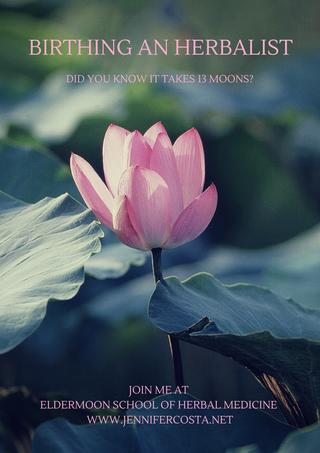
There's a start anytime on-line course to get you started or begin the process of tightening the weave of who you are, right where you are with the medicine plants. In-Person courses start each May in Woodstock, NY. where we walk together for 13 Moons and learn how to find you own way of moving with the medicine plants as an Herbalist for yourself, family and loved ones. Full descriptions below.
Jennifer Costa, Herbalist-RN, Teacher, Botanist BS, EM-CST, and Founder of ElderMoon School of Herbs & Earth Medicine
Categories
All
Classes
Decoctions
Food As Medicine
Healing Broths
Herbal Vinegars
Herbal-vinegars
Holidays And Festivals
Infusions
Medicine Making
Plant Profiles
SCIENCE!
Skin Care
Syrups
Teas
Tinctures
Archives
January 2023
September 2020
February 2020
September 2019
April 2019
January 2019
July 2018
June 2018
May 2018
April 2018
March 2018
February 2018
January 2018
December 2017
November 2017
August 2017
July 2017
April 2017
March 2017
January 2017
December 2016
November 2016
October 2016
September 2016
August 2016
July 2016
June 2016
April 2016
March 2016
January 2016
December 2015
November 2015
October 2015
August 2015
July 2015
May 2015
March 2015
January 2015
December 2014
November 2014
October 2014
September 2014
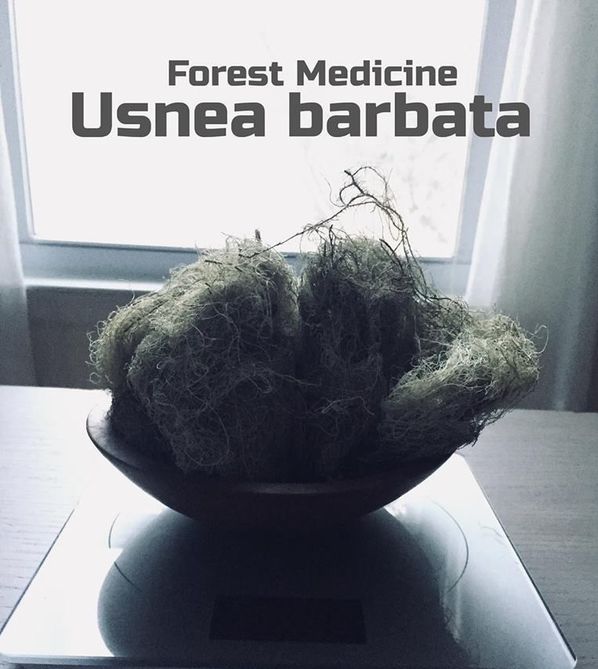
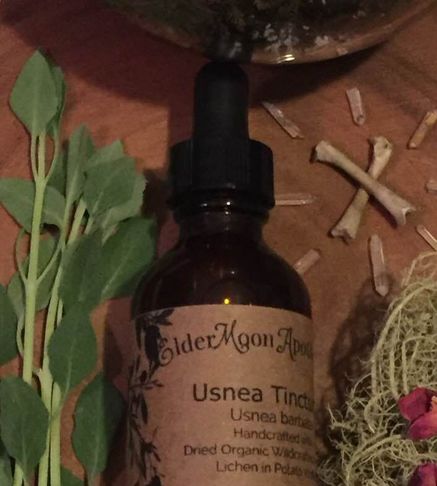
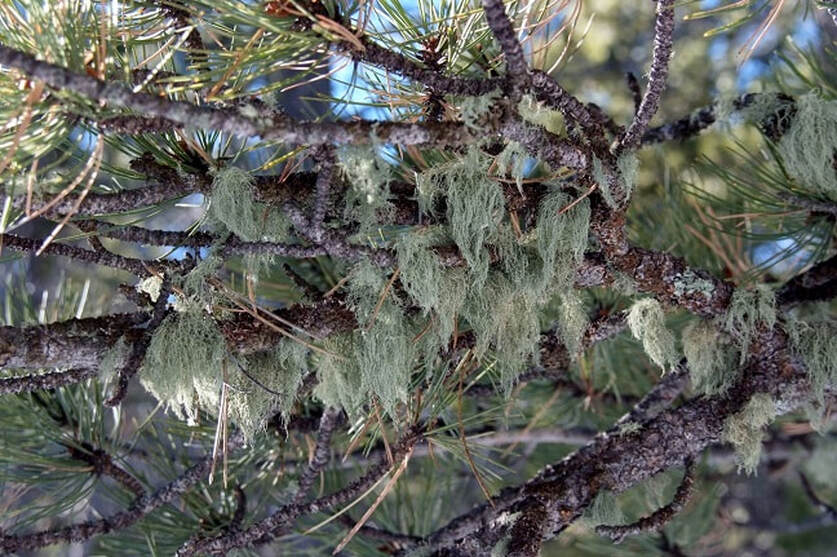
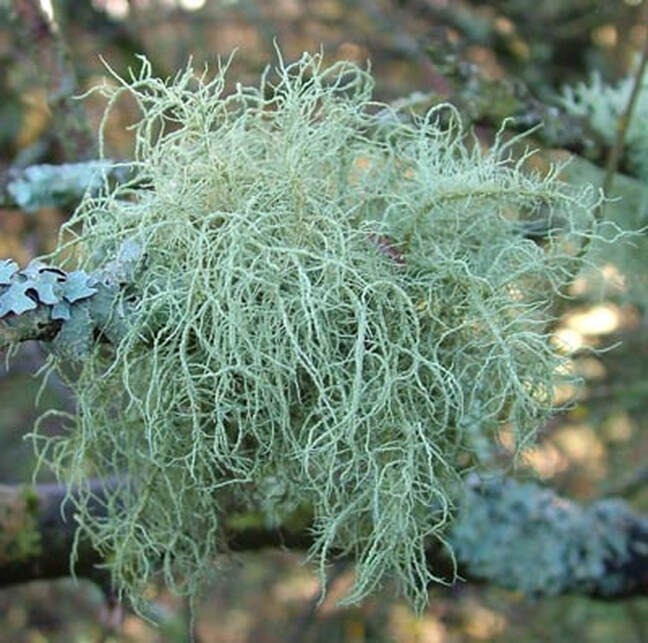
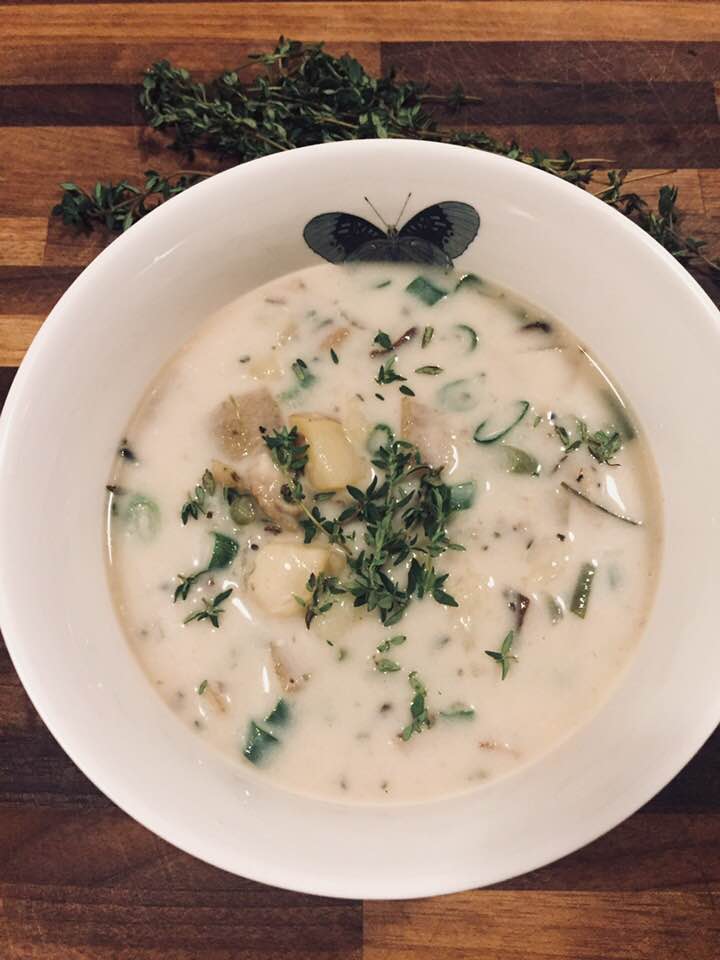
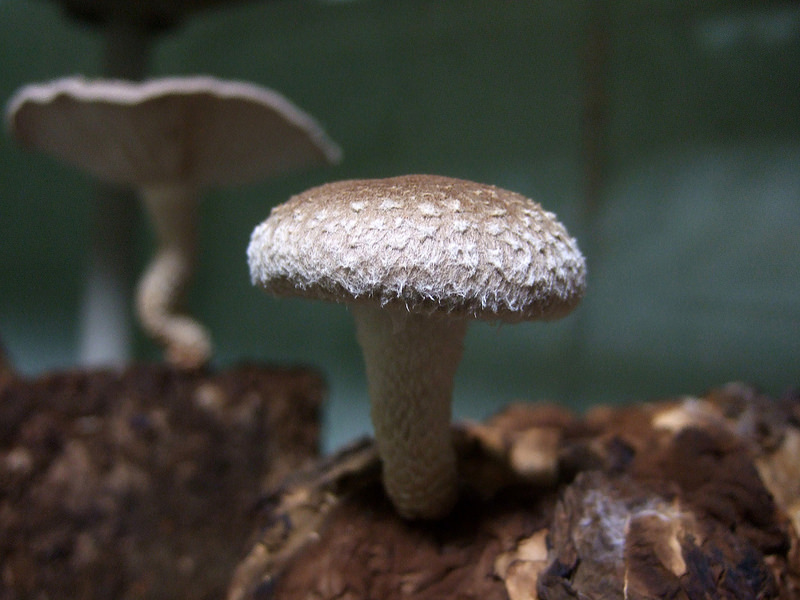
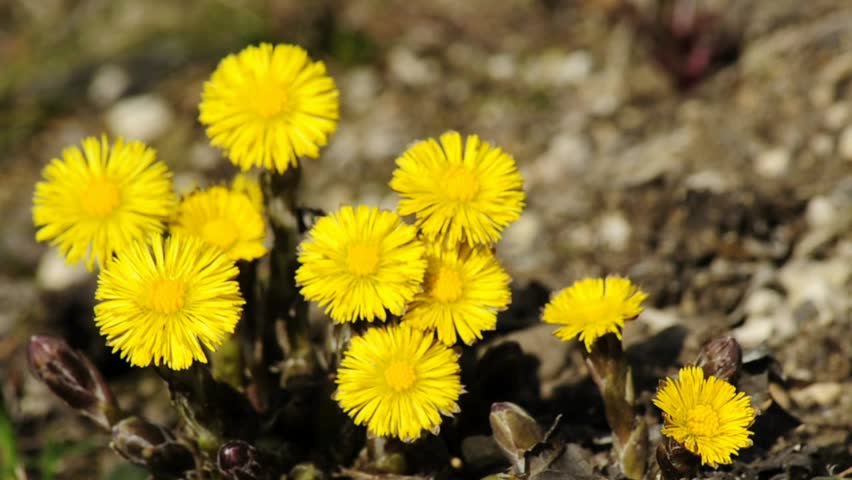
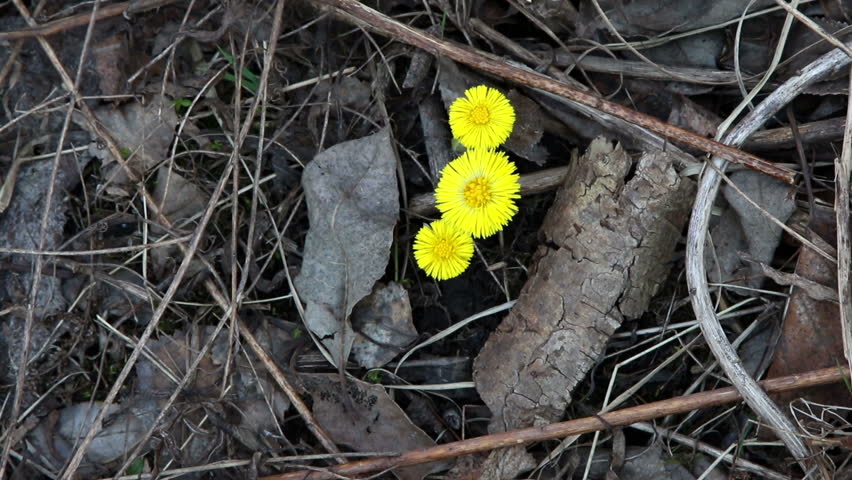
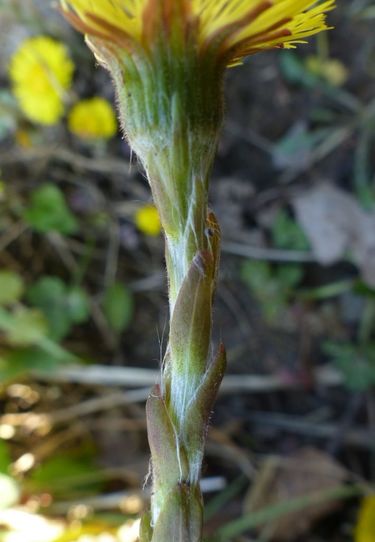
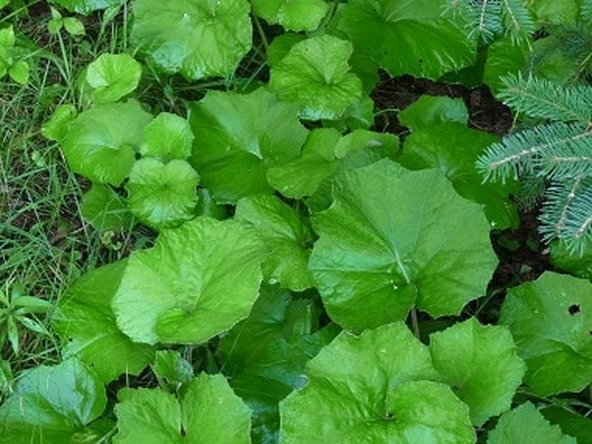
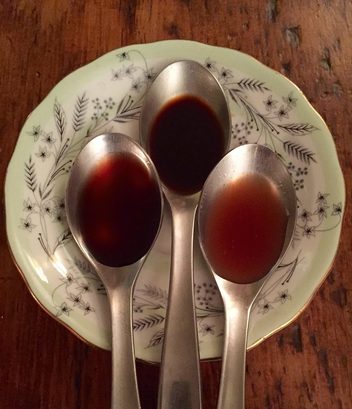
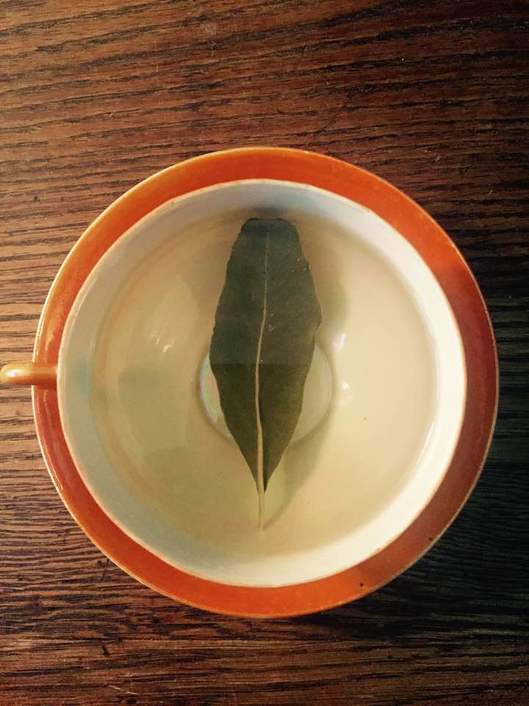
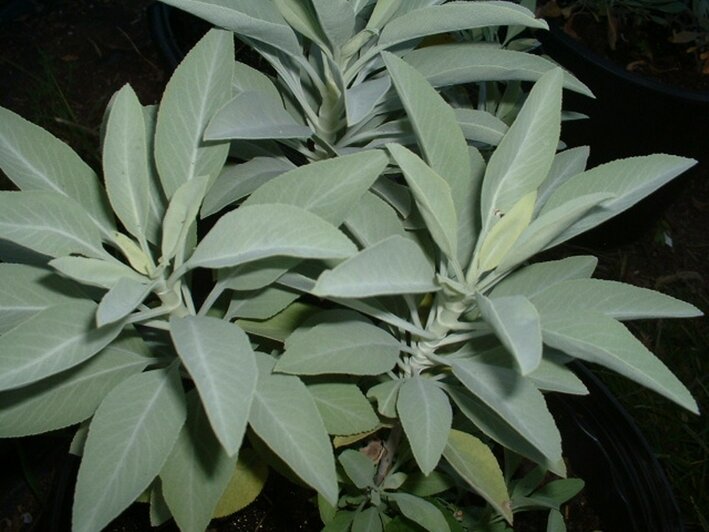
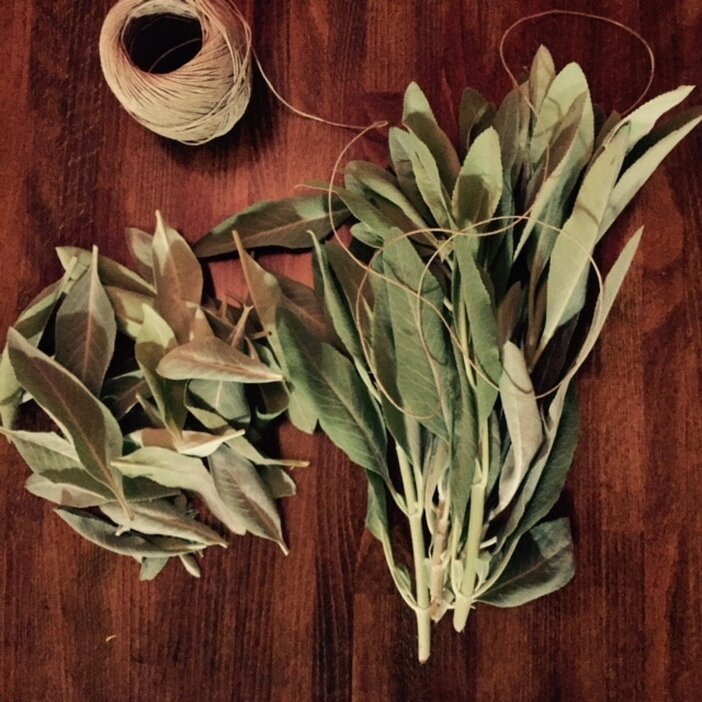
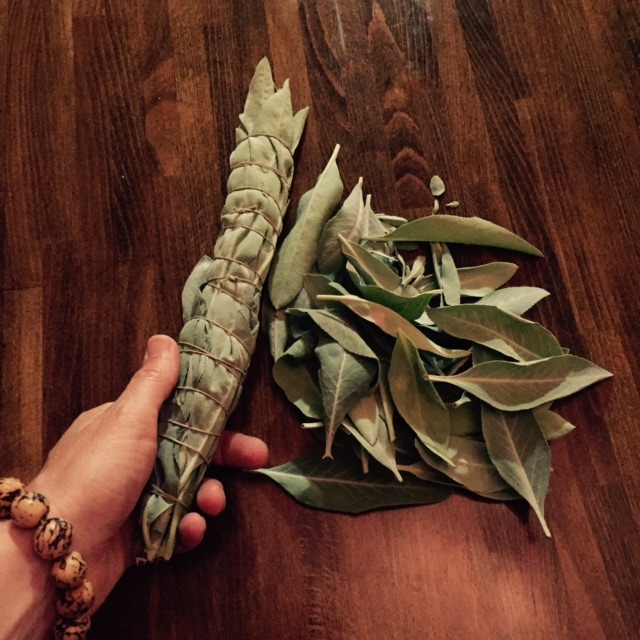
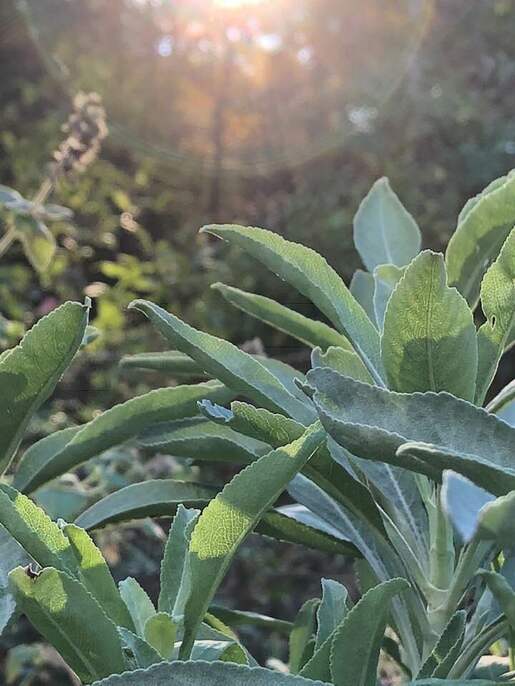
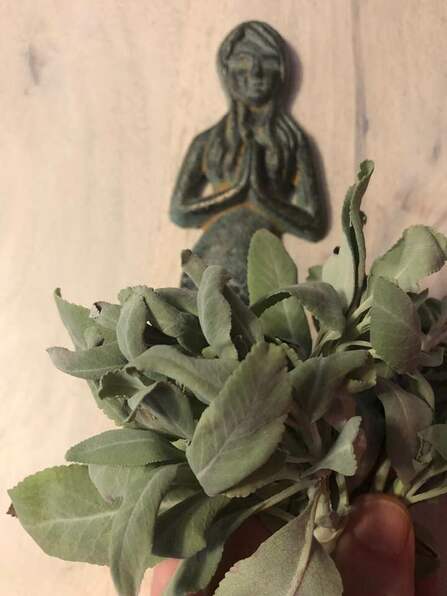
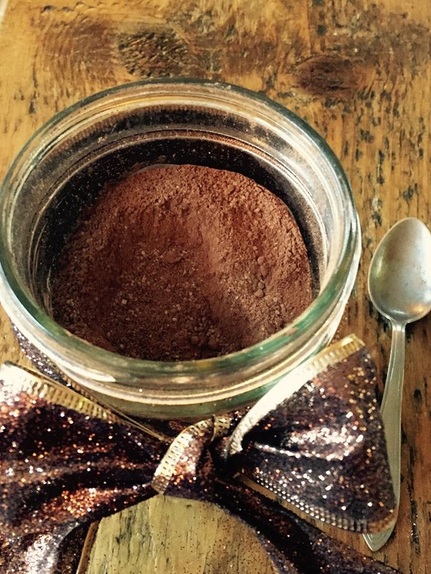
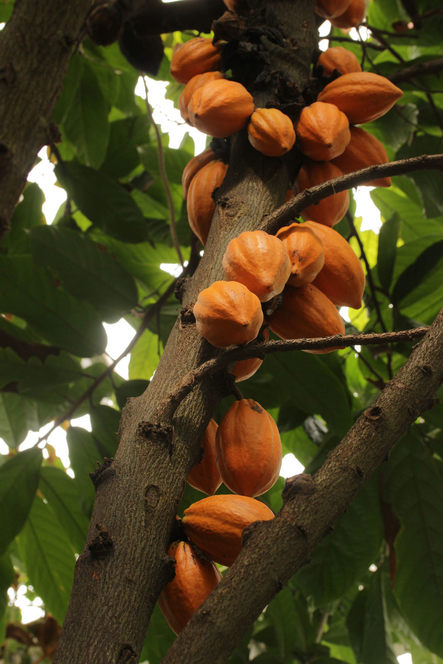
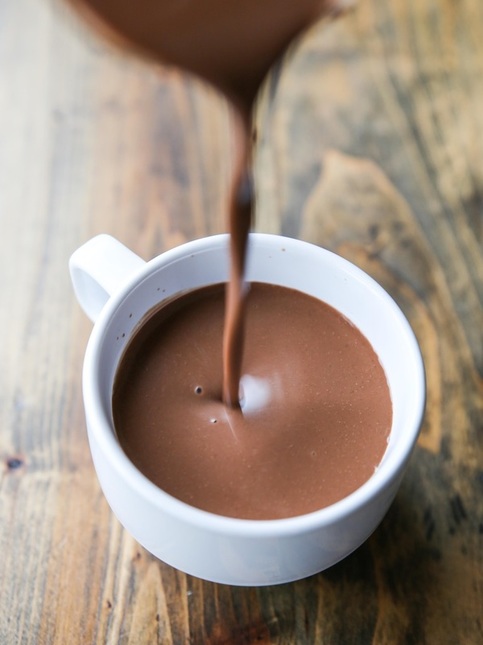
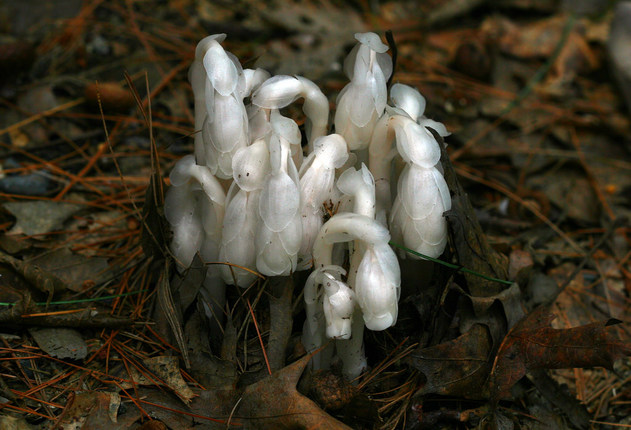
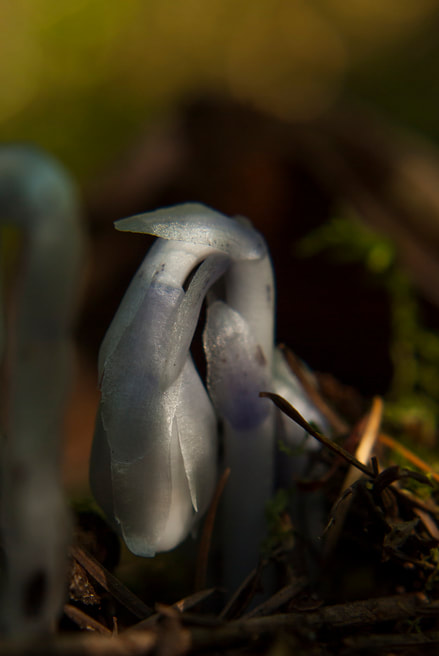
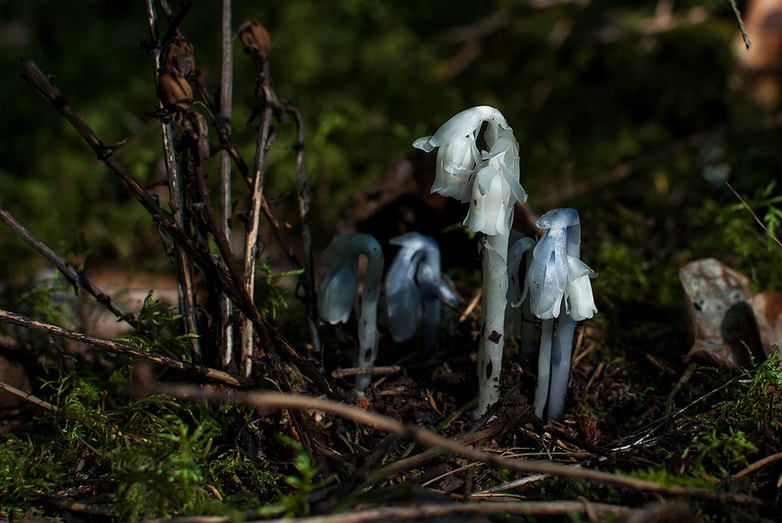
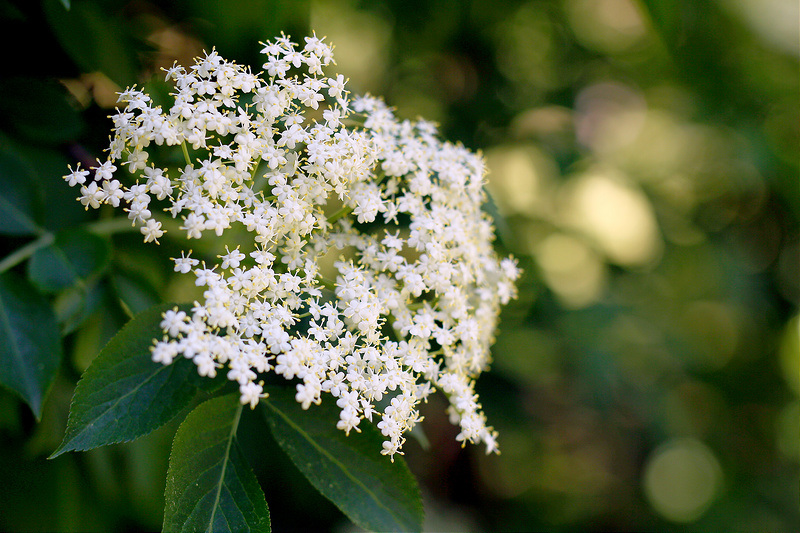
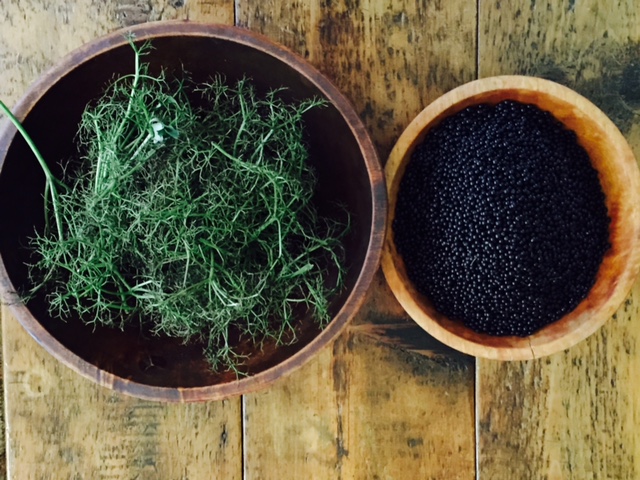
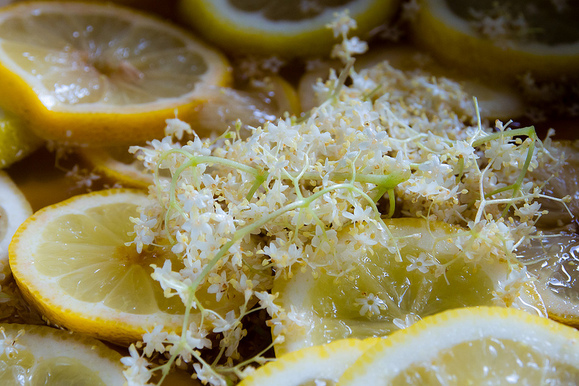
 RSS Feed
RSS Feed